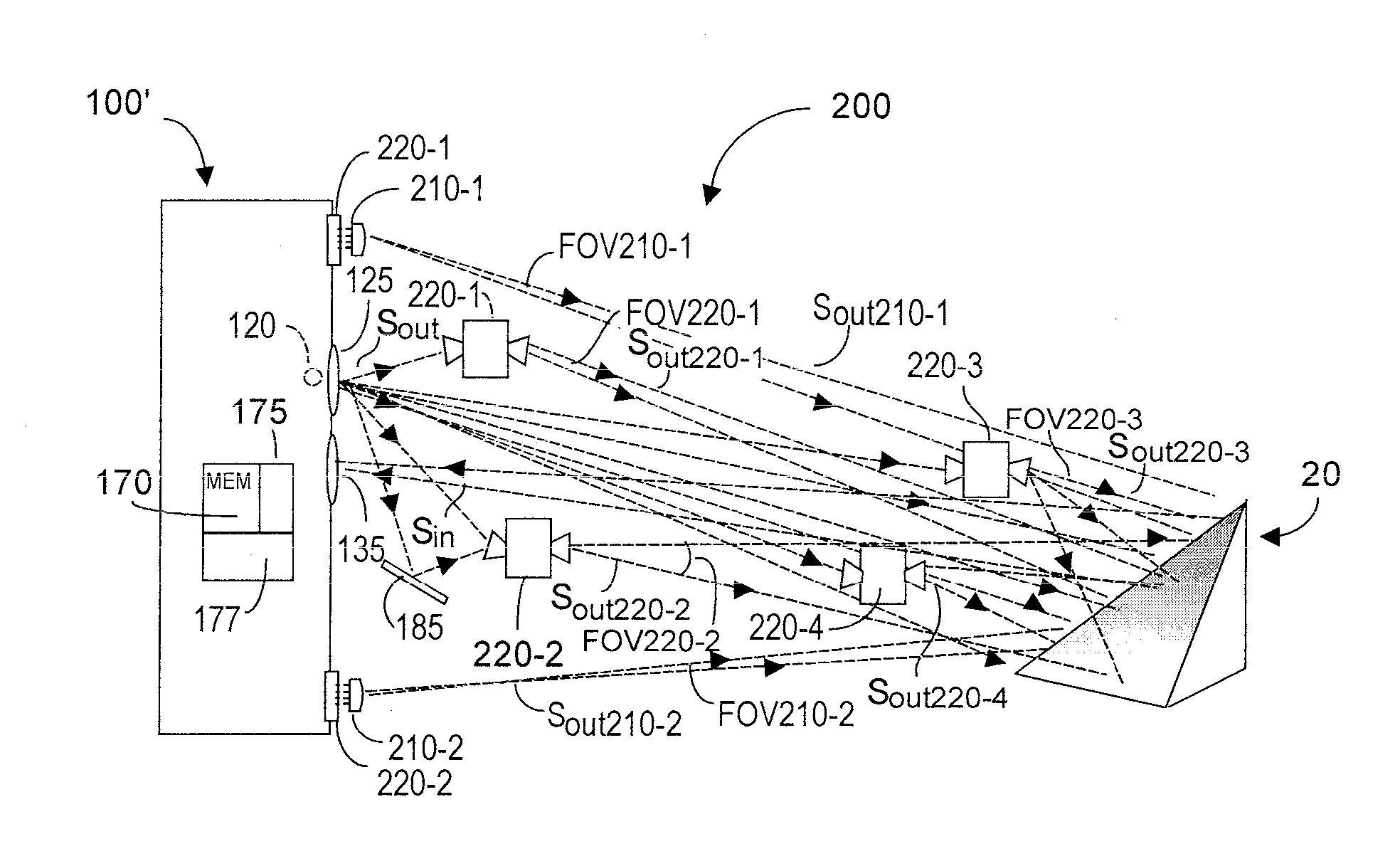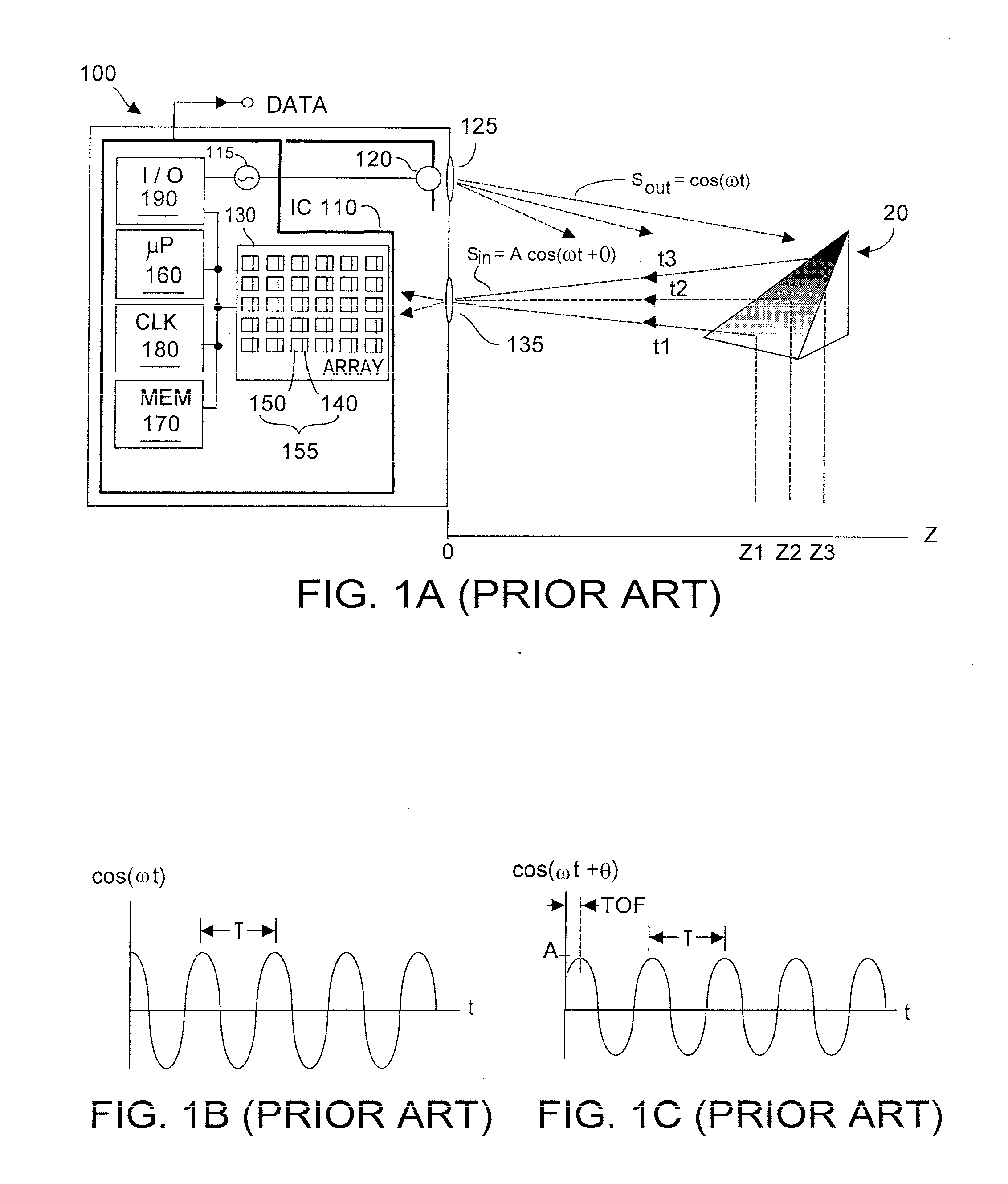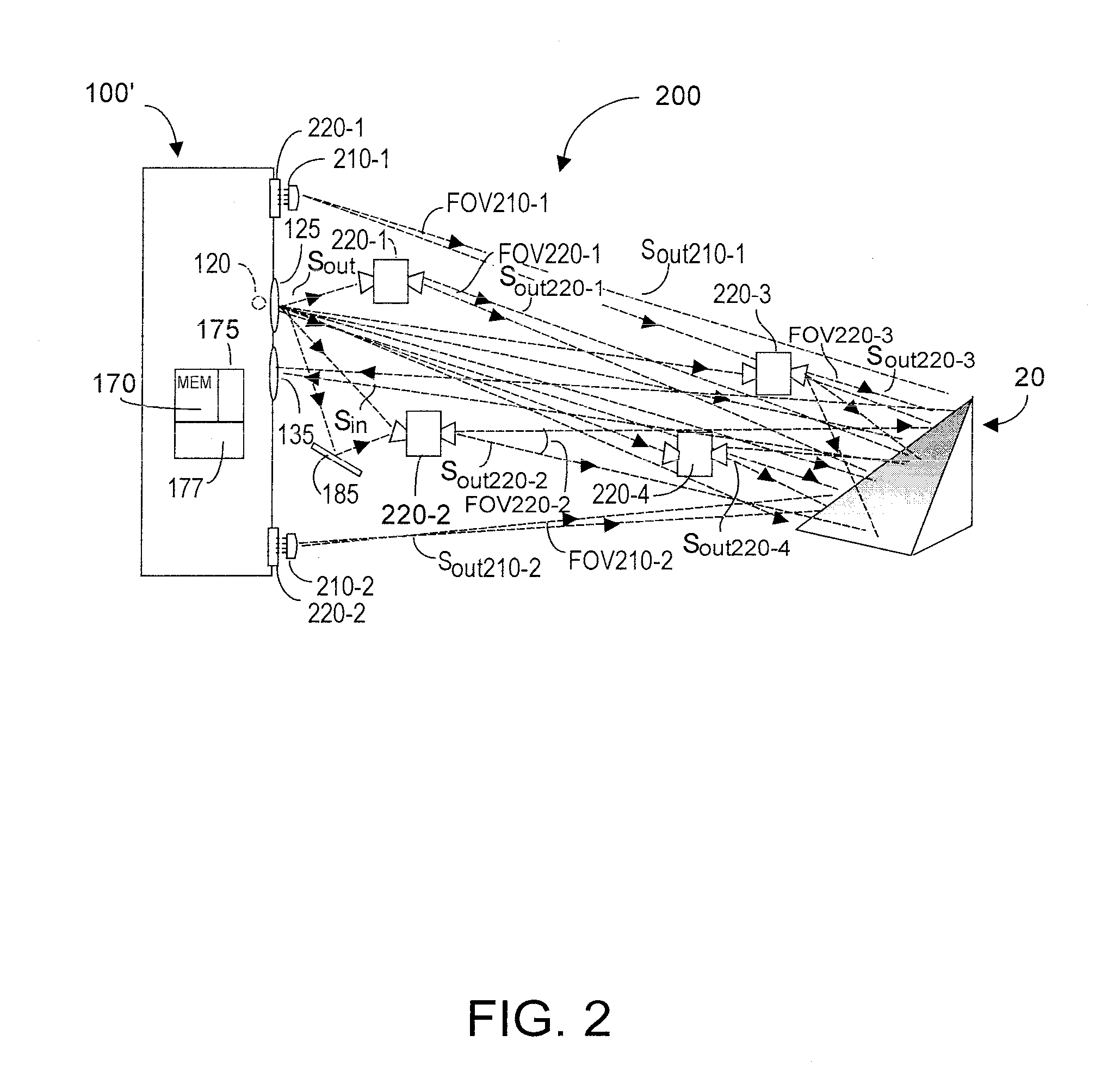Multiple synchronized optical sources for time-of-flight range finding systems
- Summary
- Abstract
- Description
- Claims
- Application Information
AI Technical Summary
Benefits of technology
Problems solved by technology
Method used
Image
Examples
Embodiment Construction
[0024]Quality and resolution of depth images and data acquired by a TOF system depends in part upon magnitude of the optical energy Sout emitted by the TOF system. As energy magnitude of Sout increases, effective Z range increases, and resolution of the acquired depth data at a given depth Z increases. In some applications, it may be desirable or necessary to increase effective Sout optical power illuminating only a portion of the target object. Magnitude of effective Sout optical power illumination varies inversely as the square of the distance Z separating the source of Sout and the target object. Thus one solution to increasing effective optical power is to reduce the distance Z. This can be accomplished by disposing at least one additional auxiliary optical energy unit (WOE) closer to the target object. The challenge, however, is to ensure that the frequency and phase of the emissions from each WOE are dynamically in synchronism with the frequency and phase of the TOF 100′ Sout ...
PUM
 Login to View More
Login to View More Abstract
Description
Claims
Application Information
 Login to View More
Login to View More - R&D
- Intellectual Property
- Life Sciences
- Materials
- Tech Scout
- Unparalleled Data Quality
- Higher Quality Content
- 60% Fewer Hallucinations
Browse by: Latest US Patents, China's latest patents, Technical Efficacy Thesaurus, Application Domain, Technology Topic, Popular Technical Reports.
© 2025 PatSnap. All rights reserved.Legal|Privacy policy|Modern Slavery Act Transparency Statement|Sitemap|About US| Contact US: help@patsnap.com



